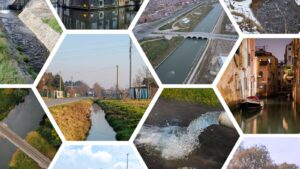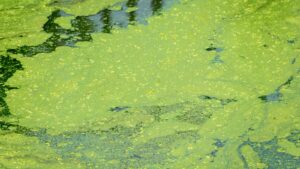Did you know that a single leaking valve in a water distribution system can waste thousands of litres of water each year? That is enough to fill a lake. This is why the water industry tries every advanced component to stop the leaking that could occur. One such component is ‘Valves’, which are small but mighty modules that control water flow, and when they fail, the consequences ripple across entire communities. However, there are many types of valves in the scene. Each type plays a unique role, from the gate valve that stops and starts flow to the check valve that blocks backflow. Understanding the different types of valves in water distribution systems is key to ensuring efficiency and reliability, and preventing costly leaks.
This article covers the types of valves in water distribution systems around the world.
This article covers the types of valves in water distribution systems around the world.
We will unlock
- Air Release Valve
- Ball Valve
- Butterfly Valve
- Check Valve
- Control Valve
- Diaphragm Valve
- Float Valve (Ballcock)
- Foot Valve
- Gate Valve
- Pressure Reducing Valve (PRV)
- Pressure Relief Valve
- Pressure Sustaining Valve
- Thermal Expansion Valve
3. Ensuring Valves in Water Supply is in Good Health via Robust Technology
What are Valves?
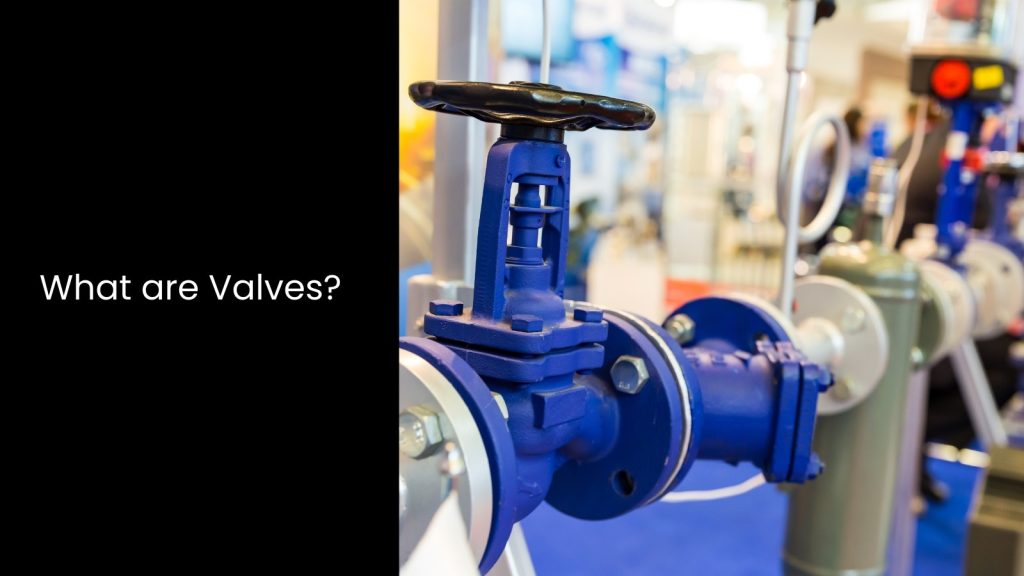
- A valve is a mechanical device that plays a crucial role in fluid systems by controlling, directing, isolating, mixing, or regulating the flow or pressure of fluids like liquids or gases.
- Valves achieve this by modifying the passageway within a pipe.
13 Types of Valves in Water Distribution Systems
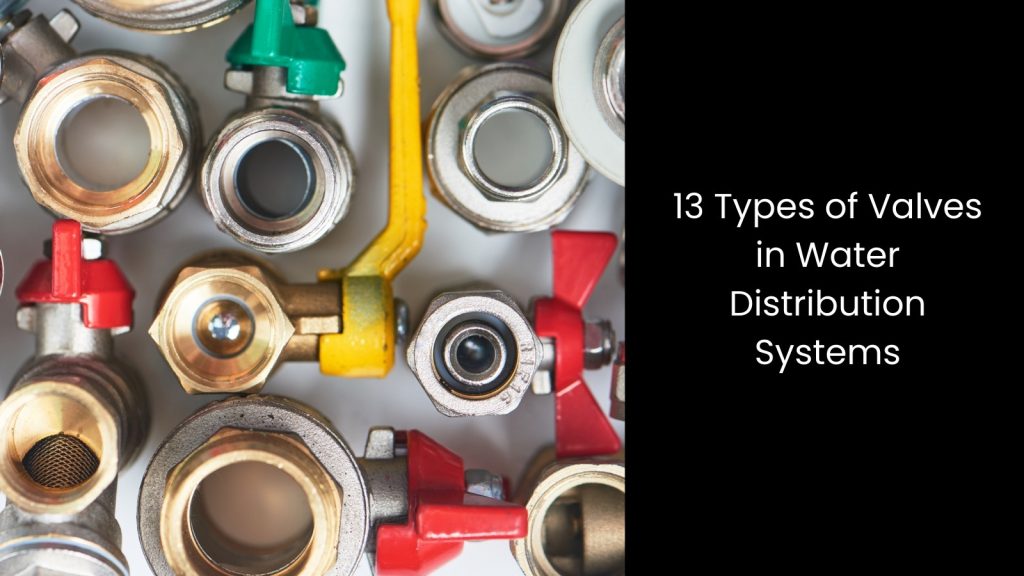
Air Release Valve
Air release valves are important in water distribution systems, designed to prevent air from accumulating in pipelines.
Air pockets can create significant issues in water flow, such as causing water hammer, reducing efficiency, and even damaging the pipes. These valves automatically release trapped air, allowing for smooth and uninterrupted flow. When ensuring that air does not disrupt the system, air release valves maintain pressure consistency and prevent water flow obstruction.
Air pockets can create significant issues in water flow, such as causing water hammer, reducing efficiency, and even damaging the pipes. These valves automatically release trapped air, allowing for smooth and uninterrupted flow. When ensuring that air does not disrupt the system, air release valves maintain pressure consistency and prevent water flow obstruction.
Ball Valve
Ball valves are known for their simple yet effective design, providing quick and reliable on/off control of water flow. The valve contains a ball with a hole in it, which aligns with the flow path to allow water to pass through or rotates to block the flow completely.
These valves are easy to operate, requiring just a quarter turn to open or close. Ball valves are especially useful in applications where tight sealing is essential, making them perfect for isolation and shut-off points in both residential and industrial water systems.
These valves are easy to operate, requiring just a quarter turn to open or close. Ball valves are especially useful in applications where tight sealing is essential, making them perfect for isolation and shut-off points in both residential and industrial water systems.
Butterfly Valve
Butterfly valves are compact, lightweight valves used in large-diameter pipelines, making them an excellent choice for water distribution systems and water treatment plants.
Their design features a rotating disc positioned perpendicular to the flow path when closed and parallel when open. This allows for quick opening and closing with minimal effort, enabling efficient flow control.
Their design features a rotating disc positioned perpendicular to the flow path when closed and parallel when open. This allows for quick opening and closing with minimal effort, enabling efficient flow control.
Check Valve
Check valves serve an important function in water distribution systems by allowing water to flow in only one direction, preventing backflow.
This one-way flow mechanism is essential in protecting water quality, ensuring that contaminated water cannot flow back into the potable supply. By automatically closing when water starts to reverse direction, check valves help maintain system integrity and prevent contamination.
This one-way flow mechanism is essential in protecting water quality, ensuring that contaminated water cannot flow back into the potable supply. By automatically closing when water starts to reverse direction, check valves help maintain system integrity and prevent contamination.
Control Valve
Control valves are essential for modulating water flow and pressure within a system, providing precise control over the water distribution. These valves adjust flow rates automatically based on system needs, ensuring water is delivered efficiently and reliably.
In industrial and commercial water systems, control valves regulate pressure and flow to meet specific operational requirements. They can be configured to respond to changes in pressure, temperature, or other factors, ensuring the system adapts to varying conditions.
In industrial and commercial water systems, control valves regulate pressure and flow to meet specific operational requirements. They can be configured to respond to changes in pressure, temperature, or other factors, ensuring the system adapts to varying conditions.
Diaphragm Valve
This specific type of valve is commonly used in applications where contamination must be minimised, such as in water treatment facilities. They feature a flexible diaphragm that isolates the flowing medium from the valve body, providing a leak-proof seal. This design prevents contamination by keeping water away from potentially harmful valve components.
Diaphragm valves are ideal for regulating viscous fluids or those containing solid particles. They can also be used in throttling applications where precise flow control is necessary.
Diaphragm valves are ideal for regulating viscous fluids or those containing solid particles. They can also be used in throttling applications where precise flow control is necessary.
Float Valve (Ballcock)
Float valves are automatic devices used to control the water level in tanks, such as those found in toilets or water heaters. They function by using a floating mechanism connected to a valve that opens or closes based on the water level.
When the water reaches a set height, the float activates the valve to stop the flow, preventing overflow and wastage. Float valves are critical in maintaining optimal water levels in storage tanks, ensuring consistent water supply without the risk of flooding or leakage.
When the water reaches a set height, the float activates the valve to stop the flow, preventing overflow and wastage. Float valves are critical in maintaining optimal water levels in storage tanks, ensuring consistent water supply without the risk of flooding or leakage.
Foot Valve
This type of valves is typically installed at the bottom of wells or submerged pumps, where they play an essential role in preventing backflow. These valves maintain the prime in the pump by ensuring that water does not flow back into the well after the pump is turned off.
The foot valve’s one-way mechanism allows water to enter the pump but prevents it from returning. This is crucial for ensuring the pump can function properly and maintain its ability to draw water.
The foot valve’s one-way mechanism allows water to enter the pump but prevents it from returning. This is crucial for ensuring the pump can function properly and maintain its ability to draw water.
Gate Valve
Gate valves play a critical role in controlling water flow, especially in high-flow applications where they are used as main shut-off valves. These valves are designed to provide an on/off control, allowing water to pass freely when fully open.
Due to their low friction loss when open, gate valves are ideal for systems that require minimal resistance to flow. They are typically used in larger pipelines, water storage tanks, and distribution systems where water needs to be shut off completely.
Due to their low friction loss when open, gate valves are ideal for systems that require minimal resistance to flow. They are typically used in larger pipelines, water storage tanks, and distribution systems where water needs to be shut off completely.
Pressure Reducing Valve (PRV)
These are essential in water distribution systems to control high-pressure water from the main supply, ensuring it reaches homes and businesses at a safe and manageable pressure.
Without a PRV, excessive water pressure can damage plumbing fixtures, appliances, and even the piping itself. PRVs work by reducing the pressure to a preset level, preventing unnecessary strain on the system.
Without a PRV, excessive water pressure can damage plumbing fixtures, appliances, and even the piping itself. PRVs work by reducing the pressure to a preset level, preventing unnecessary strain on the system.
Pressure Relief Valve
Pressure relief valves are vital safety devices used to protect water distribution systems from the dangers of overpressure. These valves are designed to open automatically when the system’s pressure exceeds a safe level, releasing excess pressure to prevent damage to pipes, valves, and other components.
By maintaining pressure within safe limits, these valves help avoid catastrophic failures that could lead to system breakdowns and water loss.
By maintaining pressure within safe limits, these valves help avoid catastrophic failures that could lead to system breakdowns and water loss.
Pressure Sustaining Valve
Pressure-sustaining valves maintain a minimum pressure in water distribution systems, ensuring that water reaches consumers consistently, even in high or elevated areas.
These valves help maintain pressure in remote or higher-elevation locations where natural pressure may be insufficient. By regulating the pressure within a set range, pressure-sustaining valves ensure the water distribution system operates smoothly, providing a reliable supply to all users.
These valves help maintain pressure in remote or higher-elevation locations where natural pressure may be insufficient. By regulating the pressure within a set range, pressure-sustaining valves ensure the water distribution system operates smoothly, providing a reliable supply to all users.
Thermal Expansion Valve
These are designed to protect water heating systems from the damaging effects of thermal expansion. When water in a closed system heats up, it expands, increasing pressure within the pipes. If left unchecked, this pressure can cause serious damage to the system, including ruptures and leaks.
Thermal expansion valves release excess pressure when it reaches a certain threshold, ensuring the system remains safe and functional.
Thermal expansion valves release excess pressure when it reaches a certain threshold, ensuring the system remains safe and functional.
Ensuring Valves in Water Supply is in Good Health via Robust Technology
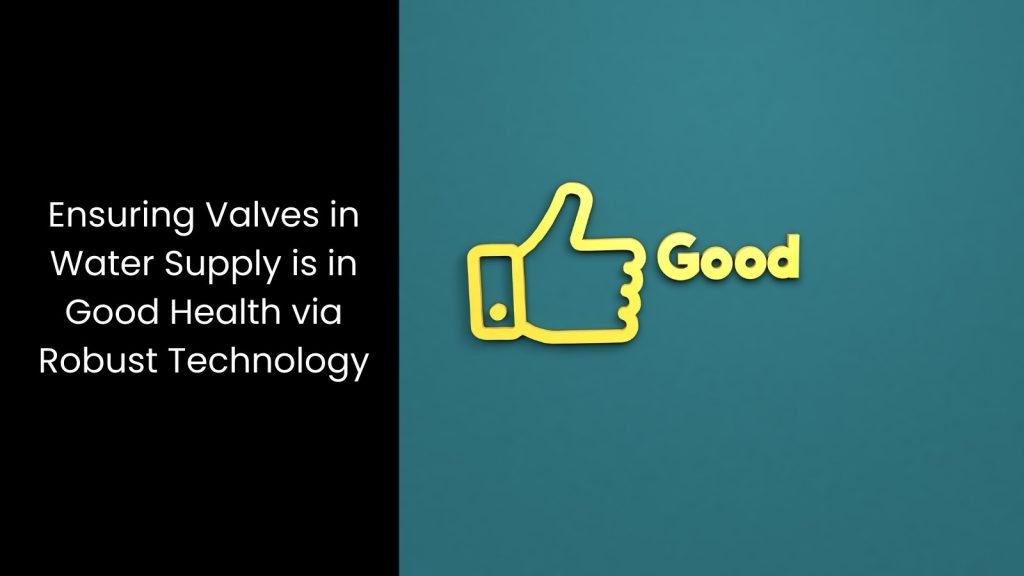
Why wait for valve failures when you can predict them? Digital Twin-powered software creates a virtual mirror of your valves, letting you monitor, simulate, and preempt issues and check for good health effortlessly in today’s world. This robust technology transforms guesswork into precision and maintenance into mastery. Investing in such advanced Water Asset Management Solution from a reputed software partner ensures your water supply system remains reliable, efficient, and resilient. You can guarantee that your water distribution valves are in good health today!


